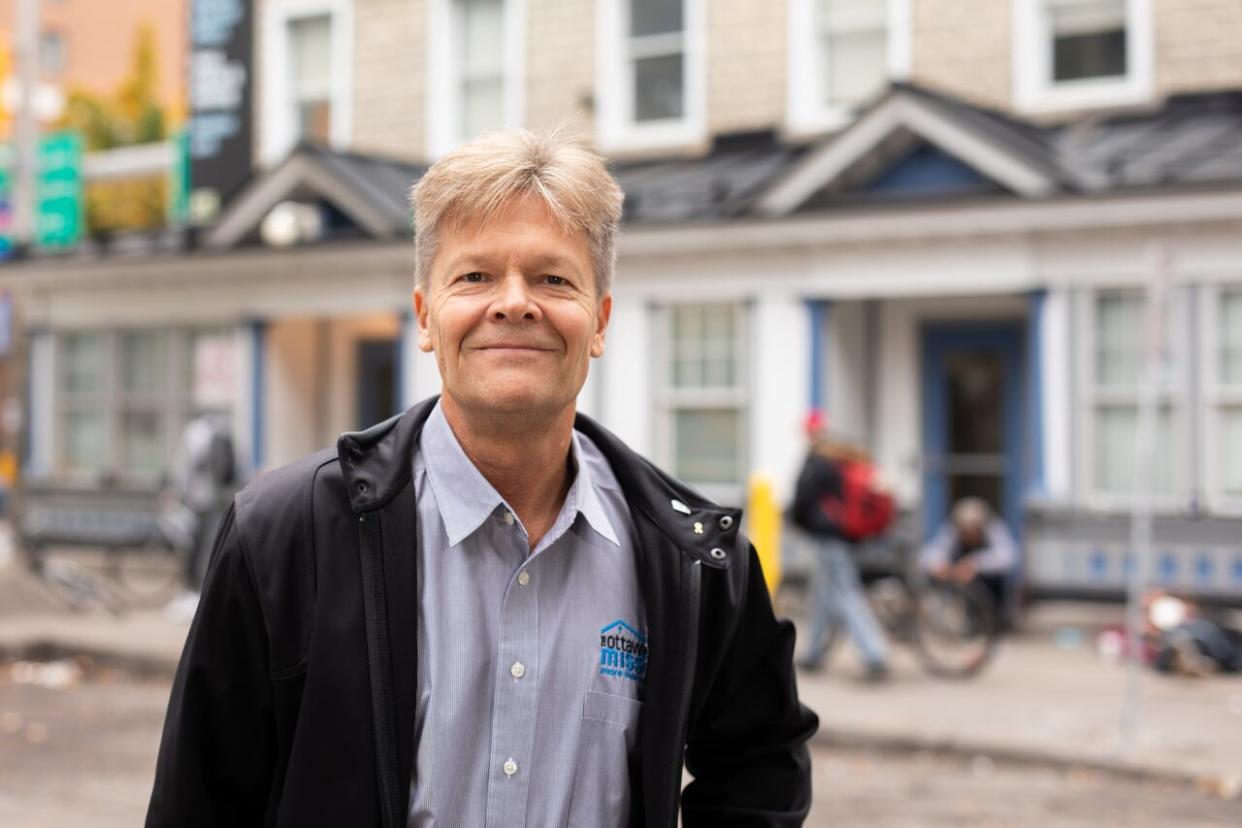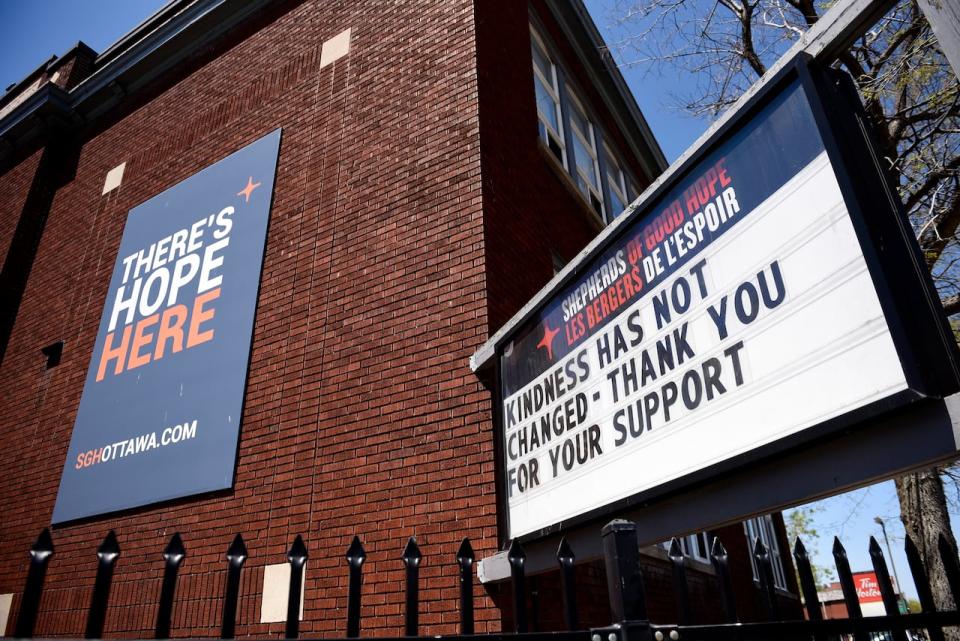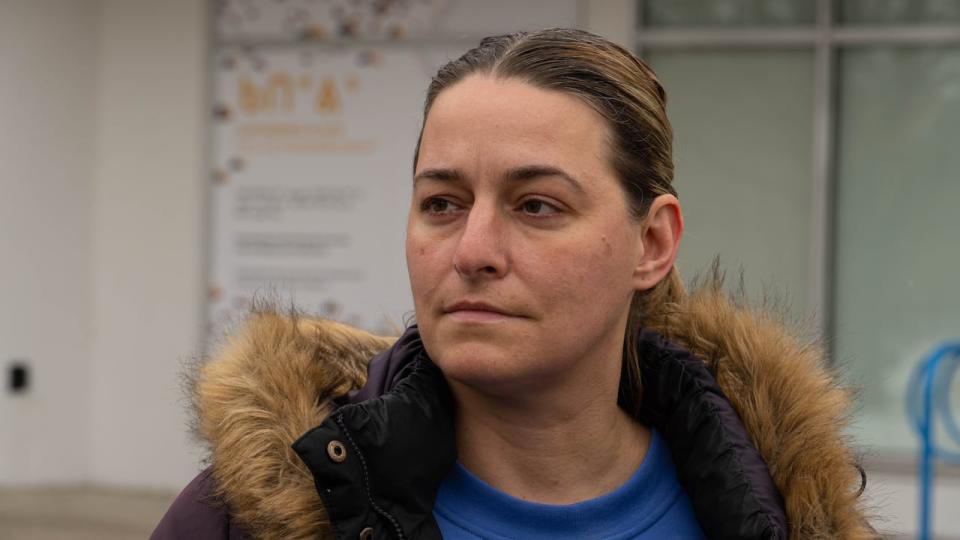Services, councillors like proposal to open more neighbourhoods to shelters

Peter Tilley thinks the Ottawa Mission's emergency shelter services should be closer to people who need them.
"Why is this just a downtown issue?" asked Tilley, CEO of the shelter at Daly Avenue and Waller Street.
"Why aren't we responding to the need in communities instead of telling somebody who's homeless or drug addicted or suffering from mental health issues in Kanata or Orléans or Cumberland that you have to go downtown?"
The city's current zoning bylaw is a barrier, in his view. It allows emergency shelters to open in a limited number of areas.
There are currently five different types of residential zones, but shelters are only allowed in the densest one, as well as mixed-use and institutional zones.
They are not a permitted use of space in mainstreet commercial, local commercial or the four remaining residential zones, which together make up a very sizeable portion of the city's urban area.
That could change if the city's sweeping rewrite of land use rules passes.
In its current draft form, it would allow emergency shelters to open in "all urban zones and designations," according to Carol Ruddy, program manager of zoning and intensification.
That includes the lowest density neighbourhoods, even in suburban areas.
The shift was already signalled in the city's official plan in 2021. The new zoning bylaw will implement the policy, though it must first go through about a year and a half of public consultation, redrafting and votes at council and its committees.
Tilley expects that the mission might make use of those changes to adopt a more decentralized model. He dreams that there could one day be an Ottawa Mission West or an Ottawa Mission East in suburbs like Nepean or Orléans.
"It could be smaller, reduced shelter size," he said. "It doesn't have to be the size of a large downtown shelter with all the services we provide, but … we would be within that community where we're trying to place people out of the shelter system and into housing."
He expects that 15 to 40 beds would be a feasible size for a community shelter.
City says shelters must still fit with community
Stephen Bartolo, the CEO of the Shepherds of Good Hope, is likewise supportive of broadening the zoning bylaws and expects the city will take into account how shelters impact communities when they make future decisions.
It's important, he said, to ensure municipal policies don't further marginalize people served by shelters.
"Ottawa is their home as well," he said in a written statement. "We urgently require a collective approach and strategy to build more non-market housing, geographically dispersed across every ward."
Ruddy said the new zoning bylaw will regulate the form of buildings, including emergency shelters, to make sure they fit into the neighbourhood context.
"A shelter would be subject to the setbacks and maximum building height and all other provisions of the zone it is located in," she said.

The Shepherds of Good Hope kitchen building at the corner of Murray Street and King Edward Avenue. (Justin Tang/The Canadian Press)
The Federation of Citizens' Associations represents about 70 community groups spread across the city. President Robert Brinker said it supports the idea of wider permissions for emergency shelters in Ottawa.
He said any shelter projects that make use of a more flexible zoning regime should come with nearby support services and frequent public transportation options.
ByWard Market area 'pretty exhausted'
Ottawa's shelters have been above their usual capacity and have most recently been trying to help an influx of asylum seekers overwhelming the system, forcing the city to convert recreation centres into space for them.
Late last year, Tilley noted that people were spending their night sleeping in plastic chairs in the shelter's waiting area.
On May 3, 2,732 people used the shelter system in Ottawa. On an average day last May it was only 2,149.
All three existing men's shelters are located within a few blocks of each other in and around the ByWard Market, while another temporary shelter is located in the same ward, represented by Rideau-Vanier Coun. Stéphanie Plante.
She hopes the new zoning bylaw will help spread shelter services out more evenly.
"If this becomes everyone's problem, then everybody will be engaged with solutions," she said.

Rideau-Vanier Coun. Stéphanie Plante listens during a news conference in March 2023. (Jean Delisle/CBC)
Plante said the priority should be building housing across the city to reduce the need for emergency shelters in the first place.
"I think my community is pretty exhausted from the issues around shelters and we really want to encourage housing more than anything, because we know that works," she said.
The new zoning bylaw looks to increase housing options in all neighbourhoods.
The draft version would allow rooming houses to open in any area where residential uses are permitted, for example. Current rules allow them in relatively high density areas, but not in low-rise residential zones.
The draft would also remove distances between rooming houses. It would do the same for emergency shelters, eliminating the buffer that now keeps them away from each other and from residential lots.
'The right thing to do,' says councillor
Stittsville Coun. Glen Gower, who is also vice chair of the planning and housing committee, said it's hard enough to build housing for vulnerable people. He doesn't think zoning should be a roadblock.
"There's an overarching idea, both in the official plan and in this zoning bylaw, that no one should be excluded from living in a neighbourhood," he said.
"I think from a moral or ethical perspective, that's the right thing to do."

Stittsville Coun. Glen Gower speaks at a meeting of Ottawa's transit commission Nov. 14, 2023. (Michel Aspirot/CBC)
Community services committee chair and Orléans West-Innes Coun. Laura Dudas said the city and its partners should be able "to put support services for our most vulnerable where they are most needed, and where services are available to best serve the greatest number of people."
Kanata South Coun. Allan Hubley said the city is facing so much pressure from federal immigration policy that it must look at "fast-tracking shelters where possible."
Orléans East-Cumberland Coun. Matt Luloff said community consultation will be key. He suggested the zoning proposal could potentially be watered down as it moves from draft to consultation to a vote.
"Oftentimes, when staff come with a proposal, they ask for the moon with the expectation that there will be moderation and discussion on some of these points," he said.
"I think probably a better approach for the city to take would be to increase our housing stock so there would be less reliance on services like shelters."


